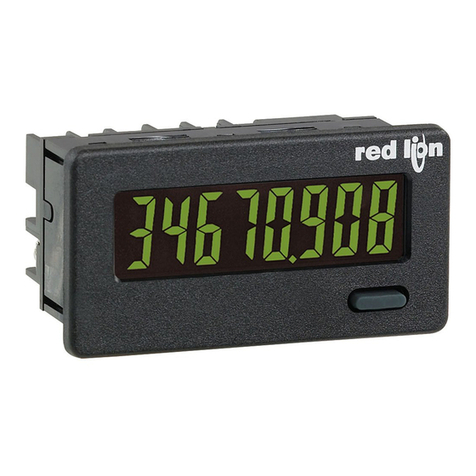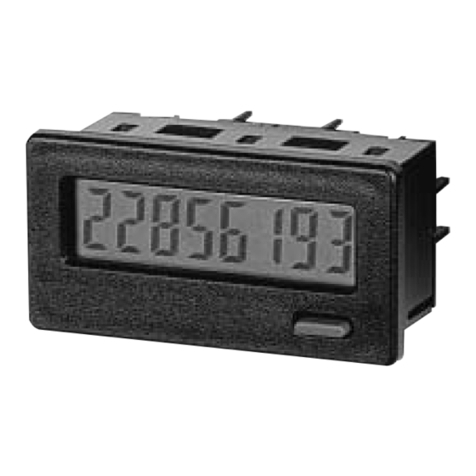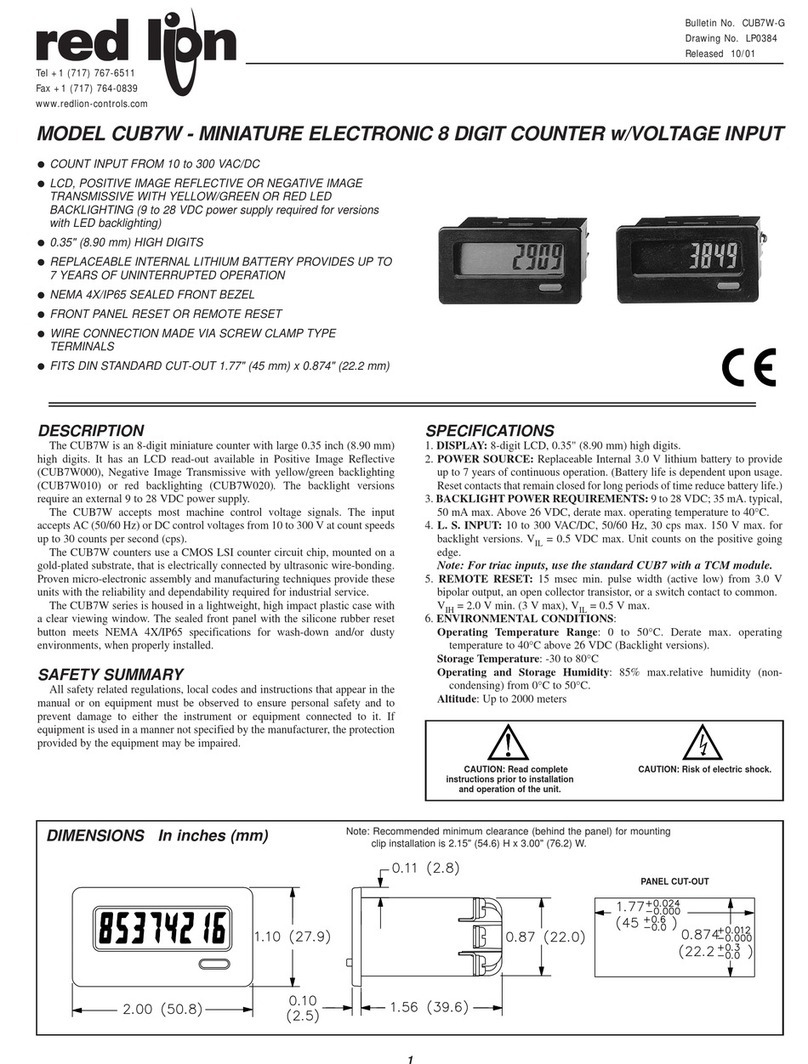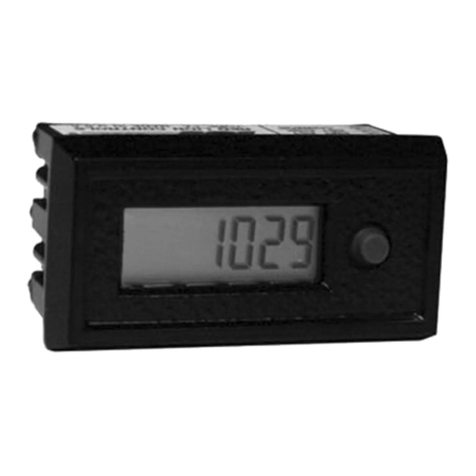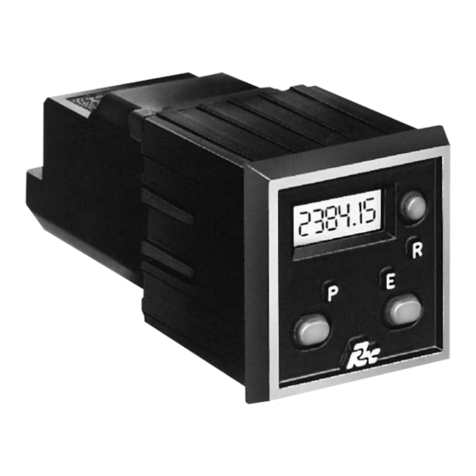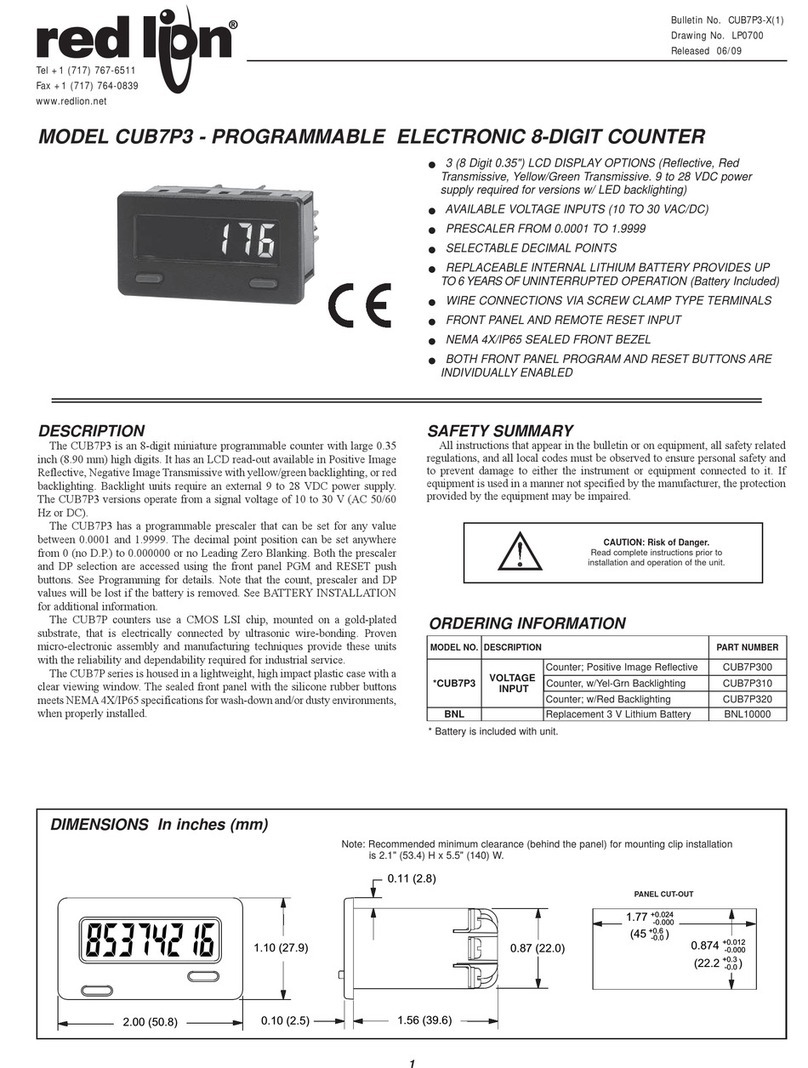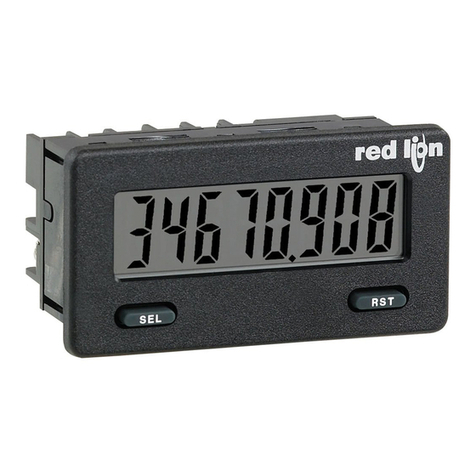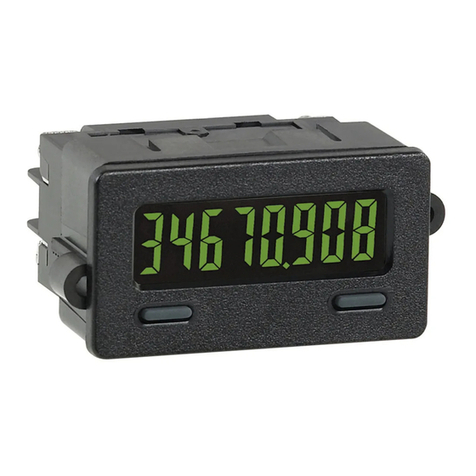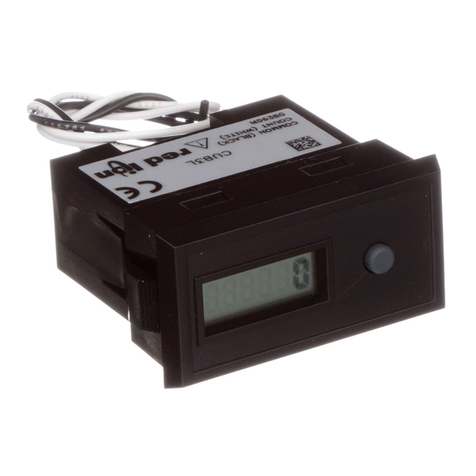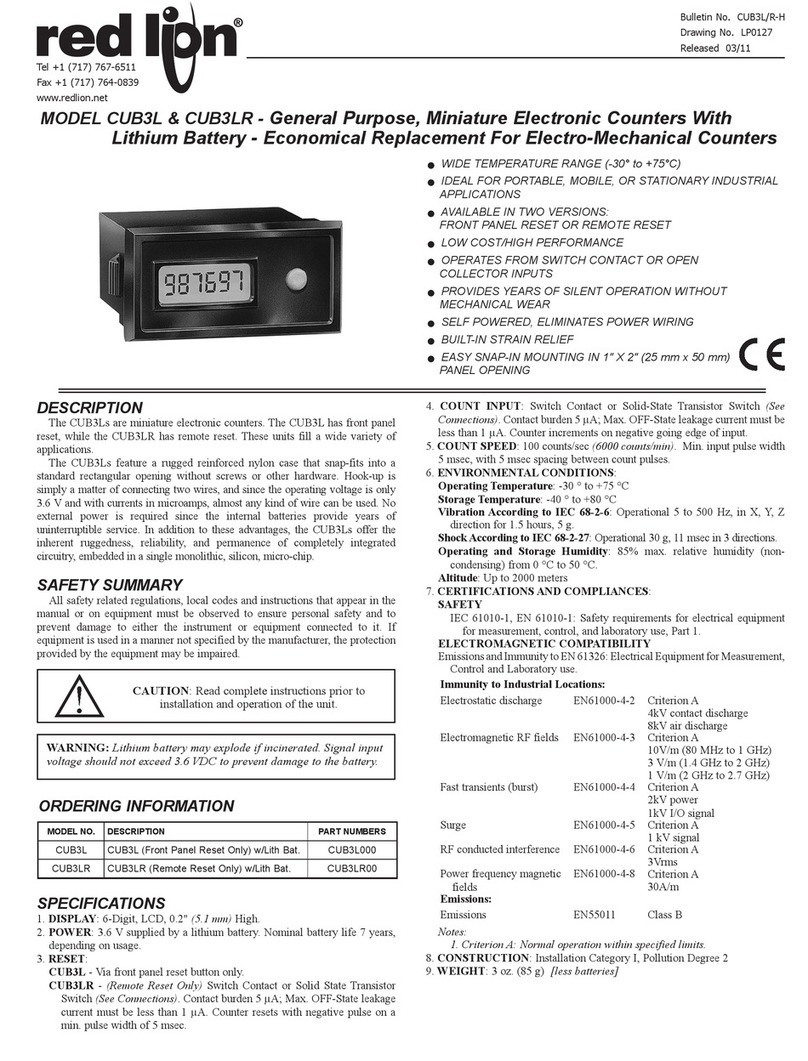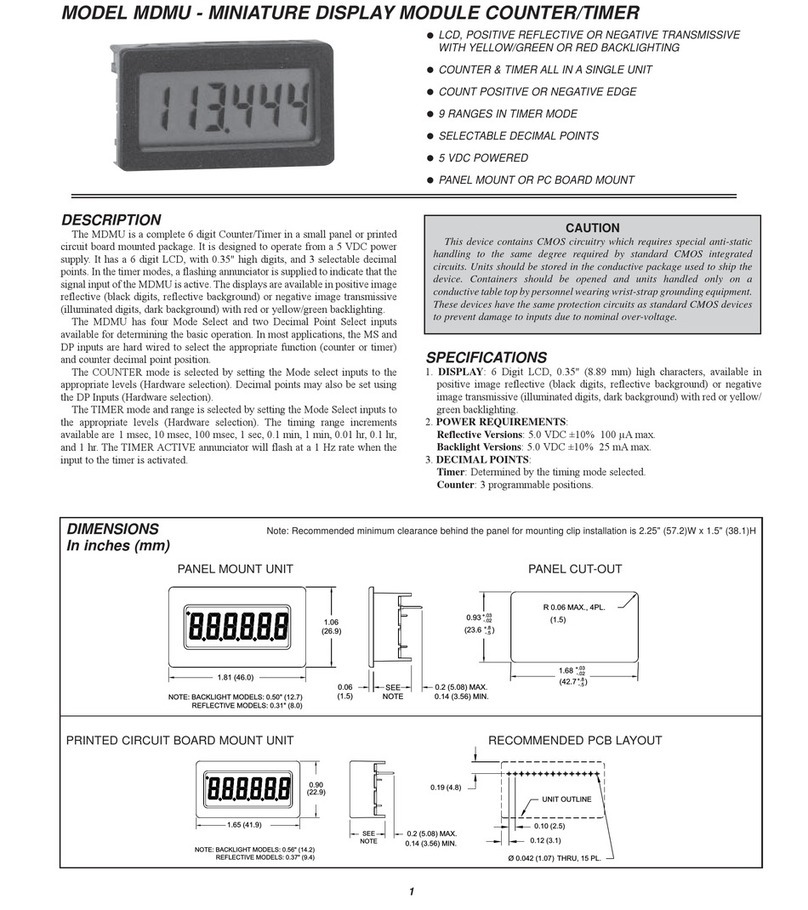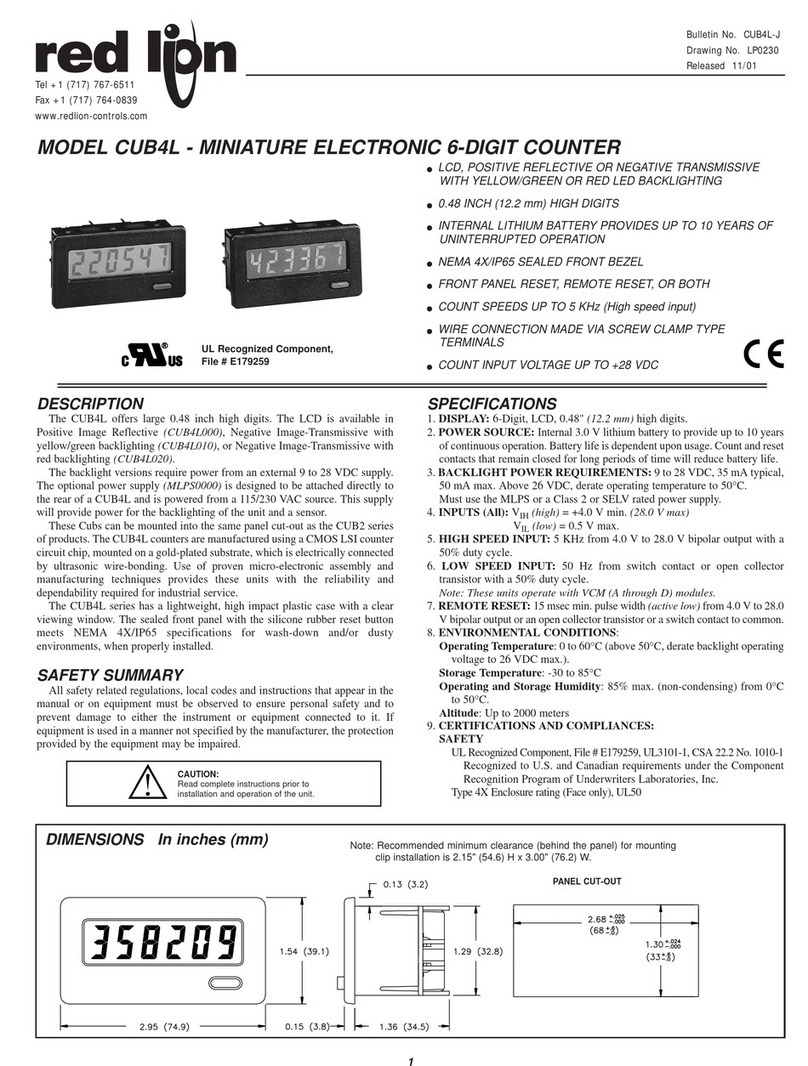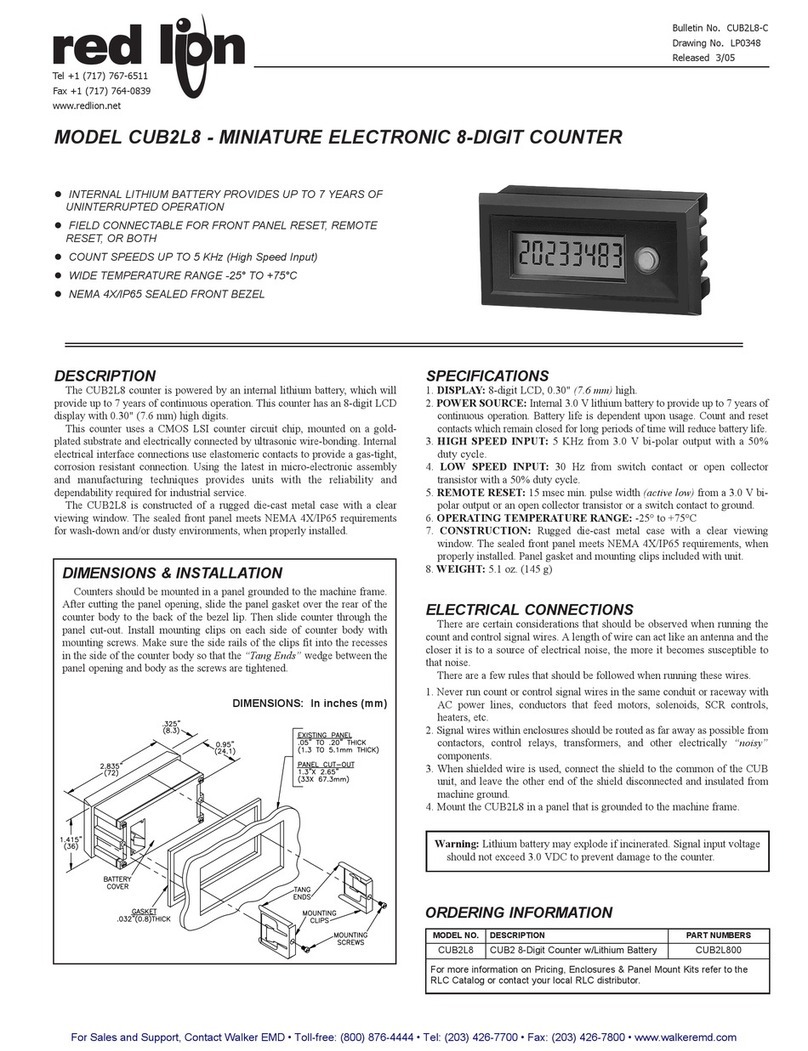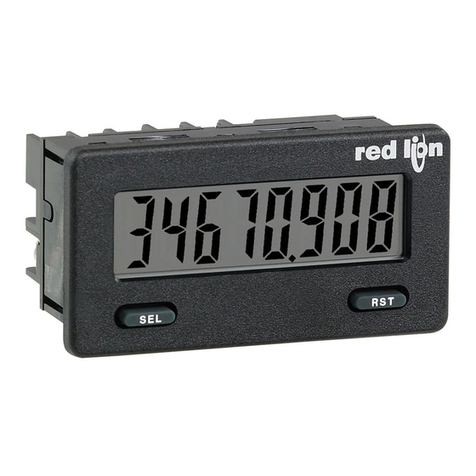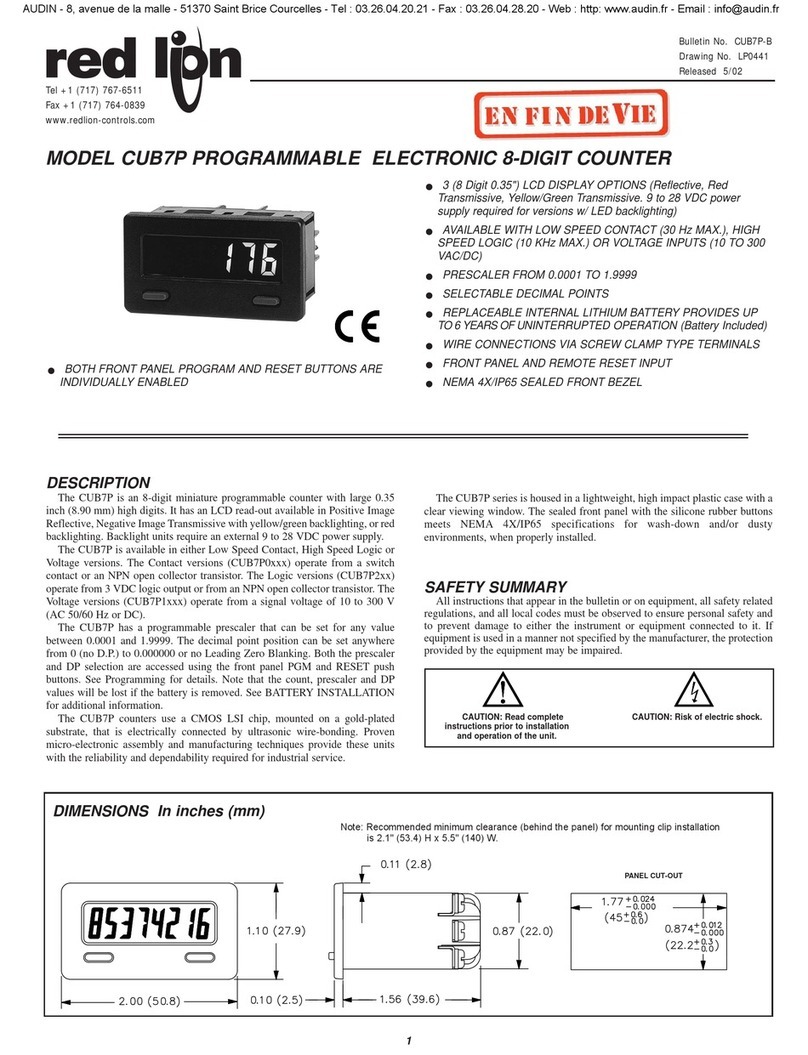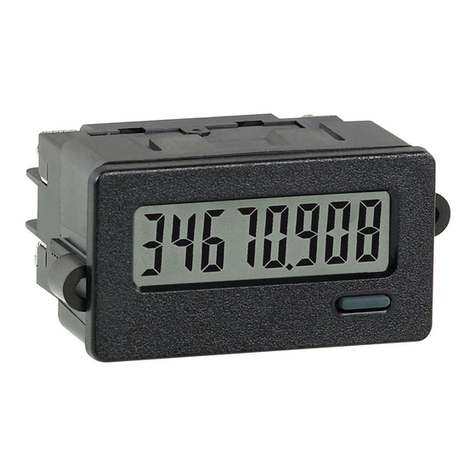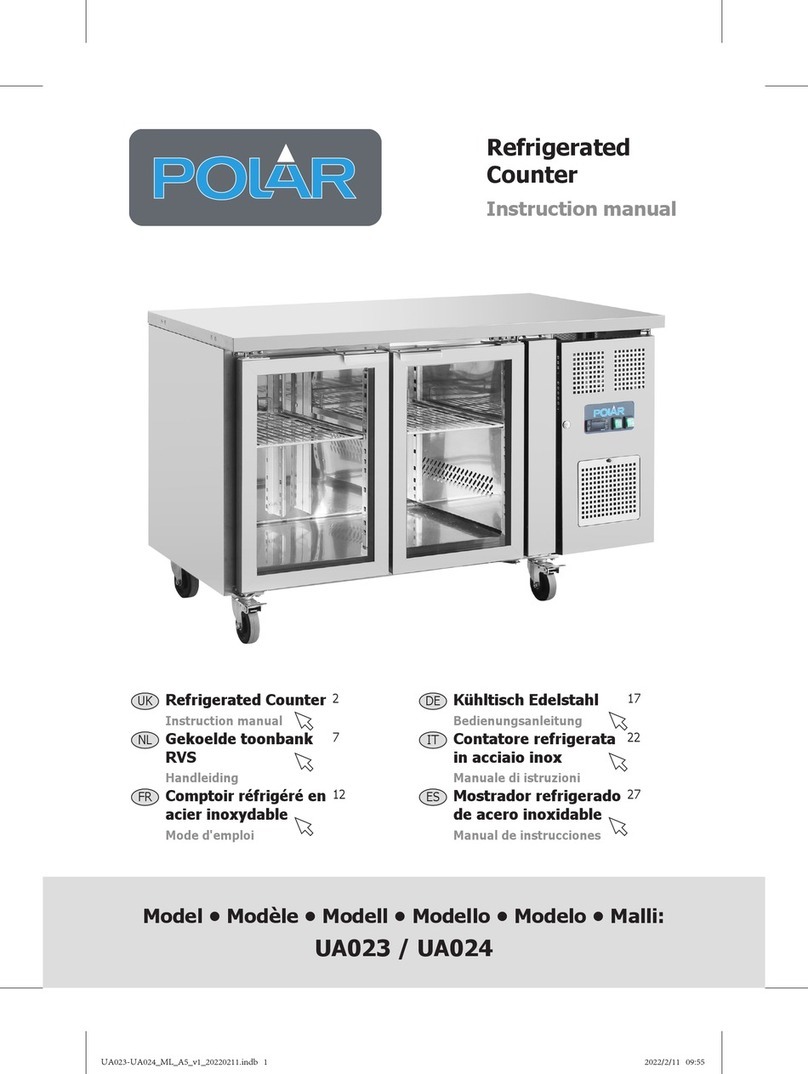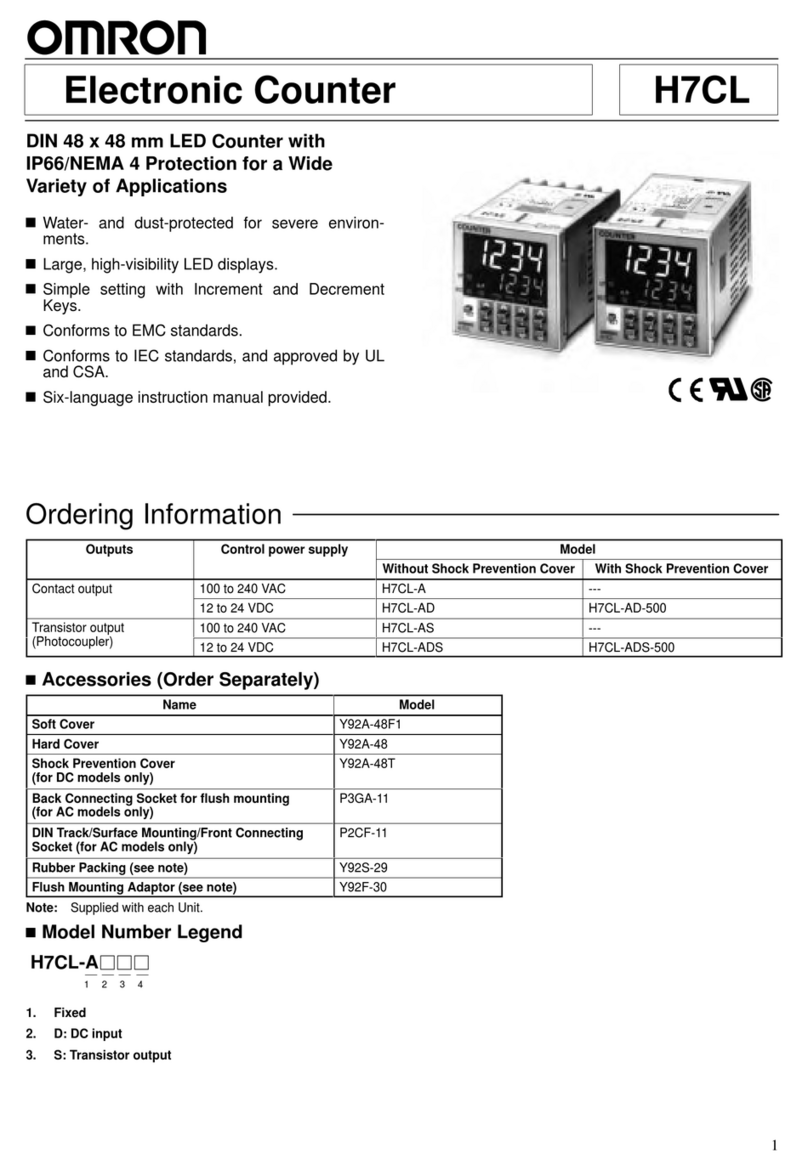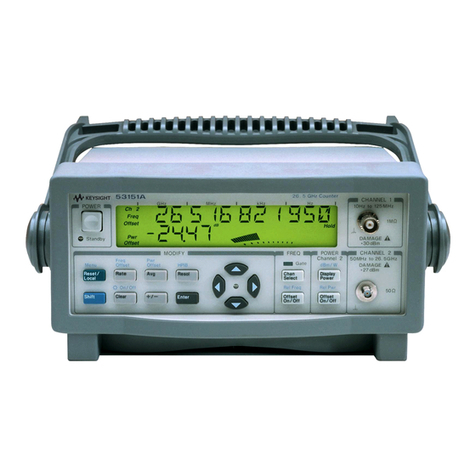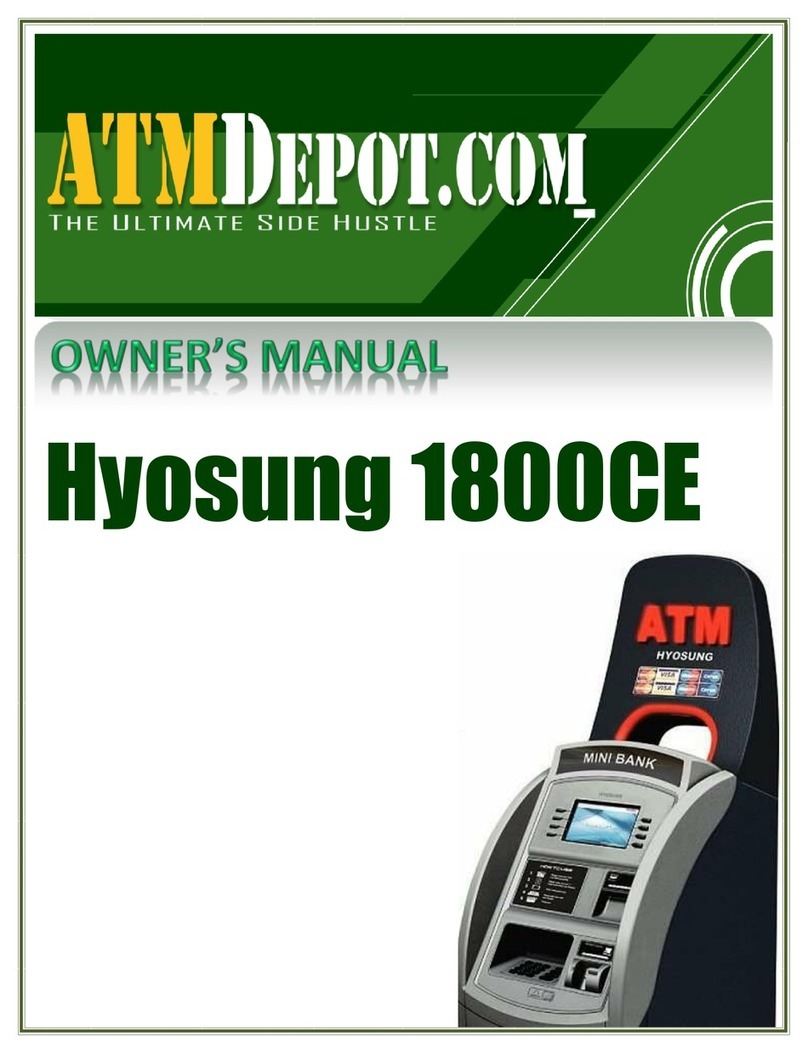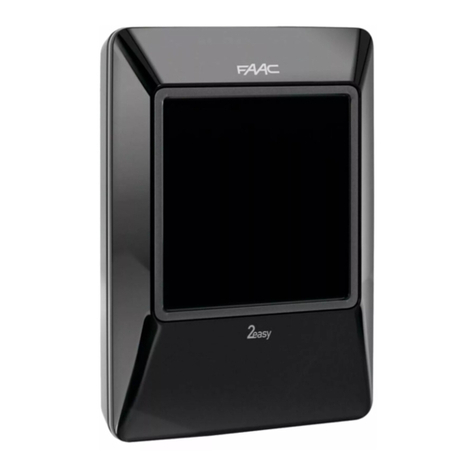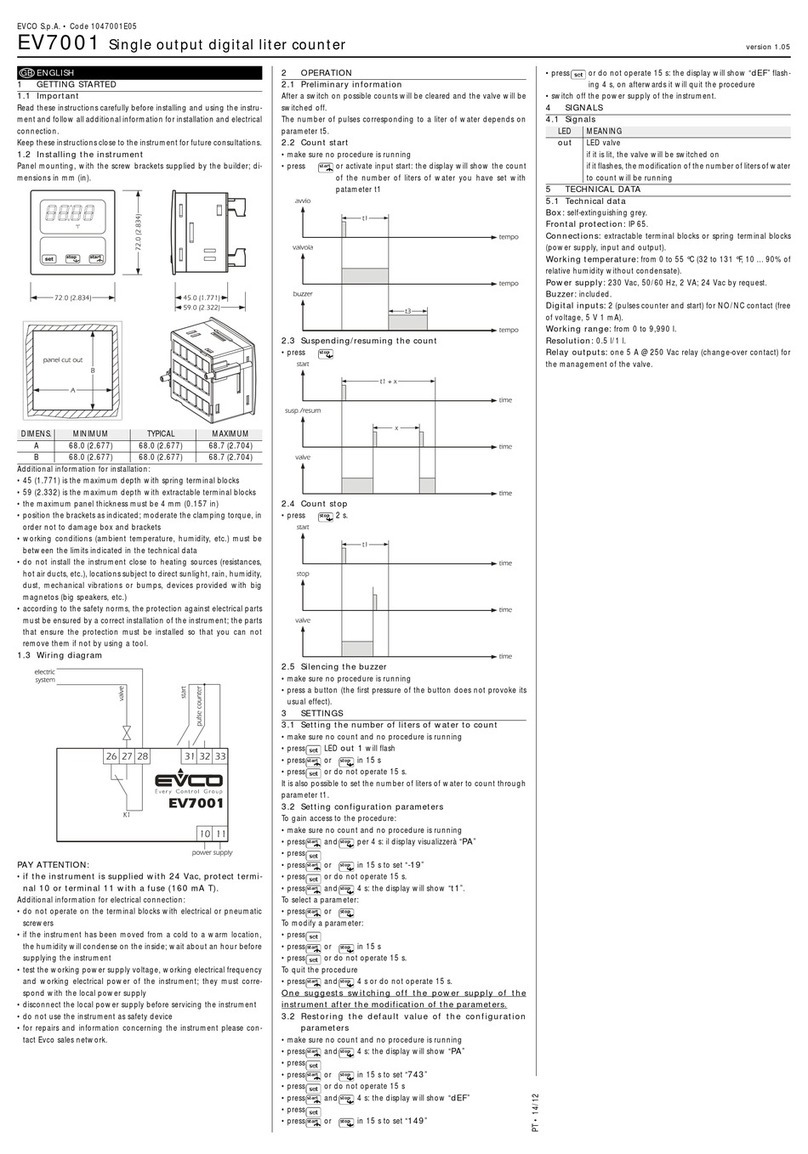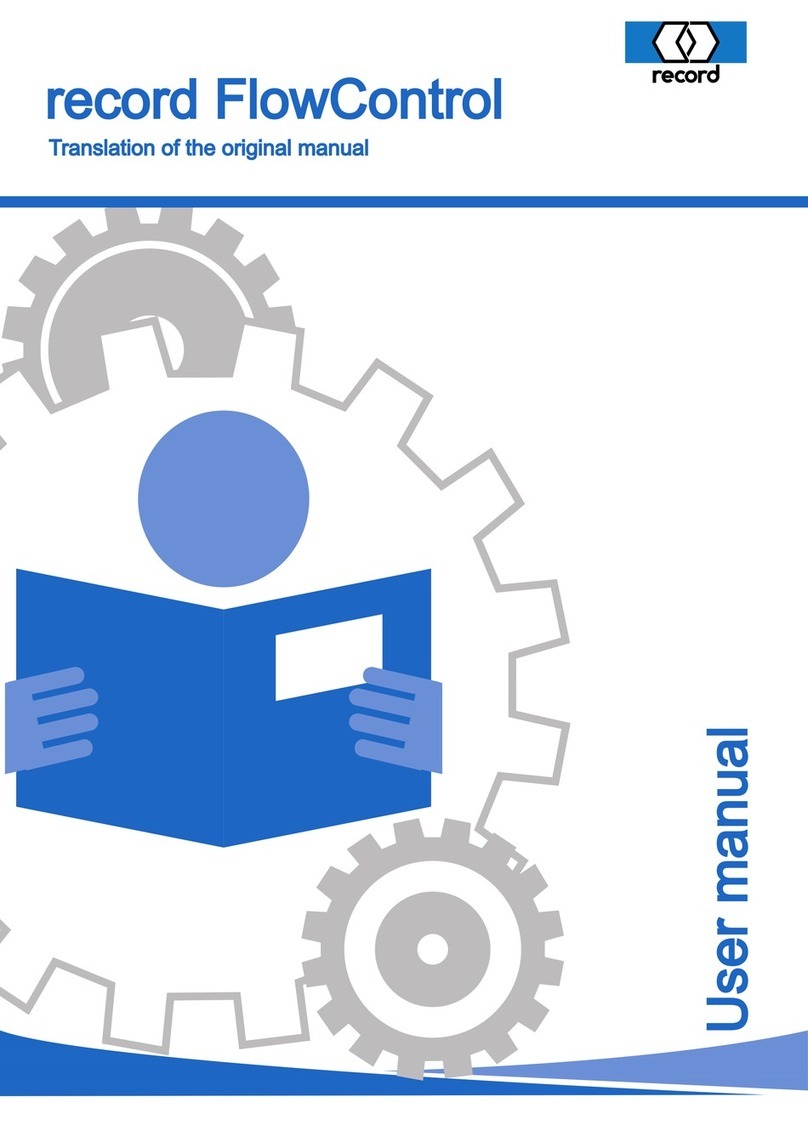1
TO HIGH SPEED PULSES FROM TTL, CMOS, OR OTHER
ELECTRONIC SOURCES
AT A PRICE LESS THAN EQUIVALENT E.M.[ELECTRO-
MECHANICAL] COUNTERS
The heart of the CUB is a tiny custom silicon chip developed by Red Lion
Controls. This chip contains all of the counting and display circuits in an area
less than 0.02 (0.5 mm) square inches. Via “micro-assembly”, the chip and other
peripheral parts are attached to a substrate with the electrical connections being
made ultrasonically - using wire approximately 1/3 the diameter of a human
hair. The result is an entirely new concept in counting, that is not only cost
effective, but opens the door to counting applications that until now were not
economically feasible.
AND HERE ARE SOME MORE ADVANTAGES:
SELF POWERED
Self-Contained batteries eliminate the need for external power and prevent
loss of count if power fails. Also provides for remote or portable applications.
Battery operation also means elimination of shock hazard and allows the use of
2-conductor bell wire for count signals and micro-power input signals.
Batteries are easily replaceable (2 “N” Cells, alkaline) and average battery
life is four years.
HIGH SPEED
The 5 KHz count speed is at least 100 times faster than “high performance”
E.M. counters. This opens up vast new application areas that previously were
impossible, or at best, accommodated by expensive electronic counters costing
5 to 10 times as much.
FLEXIBILITY
Various count inputs allow use with switch contacts or high speed pulse
outputs from electronic sensors and circuits. The reset function can be disabled,
set up for front panel reset, remote reset, or both.
SPECIFICATIONS
1. DISPLAY: 6-digit LCD
CUB 1: 0.2" (5 mm) high
CUB 2: 0.35" (9 mm) high
2. POWER SOURCE: No external power required. Operates from 2 “N” type
alkaline batteries (supplied separately). Battery life up to 4 years or more.
(See Note, at right.)
3. COUNT & RESET INPUT SIGNALS: Adapts to Count-Switch Contact
Signals, Open-Collector Transistor Outputs, and Bi-Polar Drive Outputs as
shown in the diagrams on the following page. Counter increments and resets
on negative going (pull down) transition of count or reset signal.
4. ENVIRONMENTAL CONDITIONS:
Storage Temperature Range: -20° to 60°C (-4° to 140°F)
Operating Temperature Range: 0° to 50°C (32° to 122°F)
Vibration According to IEC 68-2-6: Operational 5 to 500 Hz, in X, Y, Z
direction for 1.5 hours, 5 g’s.
Shock According to IEC 68-2-27: Operational 30 g, 11 msec in 3 directions.
NO-WEAR, NO-NOISE
The CUB’s micro-circuits can accurately and silently accumulate enough
counts in one hour to completely wear out an ordinary E.M. counter. More over,
it can repeat this performance 3500 times (4 years) with just one set of batteries.
RELIABILITY
Internal “micro-assembly” construction withstands many times the “G”
force of shock and vibration compared to conventional construction.
CUB counters also feature elastomeric contacts. This eliminates long term
problems associated with contact corrosion.
Battery operation, a high degree of input filtering, plus an inherent common
mode rejection ratio of more than 120 dB @ 50/60 Hz, provides ultra-high
immunity from electrical noise interference.
RUGGED, SEALED FRONT-PANEL CONSTRUCTION
Housed in a die-cast metal case, CUB counters are front panel sealed and
designed to meet NEMA 4/IP65 specifications, for wash-down and/or dust
when properly installed.
5. COUNT SPEED: Up to 50 Hz with switch contact input (counters have
internal de-bounce circuits) or up to 5 KHz with solid-state electronic input
(See diagrams on following page).
Note: Only Alkaline Cells are recommended for use with CUB Counters. DO
NOT USE CARBON-ZINC BATTERIES since they have short life times
and can leak electrolyte causing internal corrosion damage. When using
switch contacts for count input or remote reset, normally open contact
circuits are recommended. Switch contacts that remain normally-closed and
are opened only briefly to signal a count, can reduce battery life to somewhat
less than 4 years.
MODELS CUB 1 & CUB 2 COUNTERS
OPEN UP NEW COUNTING HORIZONS, FROM COUNTING SIMPLE SWITCH CONTACT CLOSURES
USE CUB COUNTERS WITH:
VCM • VOLTAGE CONVERTER MODULES for isolated, A.C., control voltage count inputs to 270 VAC,
LCM • LOGIC CONVERTER MODULES for interface with standard logic voltages & outputs,
PSMA • POWER SUPPLY & INTERFACE MODULE for operation with electronic sensors.
[See Accessory Section Of The Catalog]
CUB 1 MINIATURE
ELECTRONIC COUNTER
CUB 2 GENERAL PURPOSE
INDUSTRIAL COUNTER
Bulletin No. CUB1/2-J
Drawing No. LP0001
Released 02/09
Tel +1 (717) 767-6511
Fax +1 (717) 764-0839
www.redlion.net
